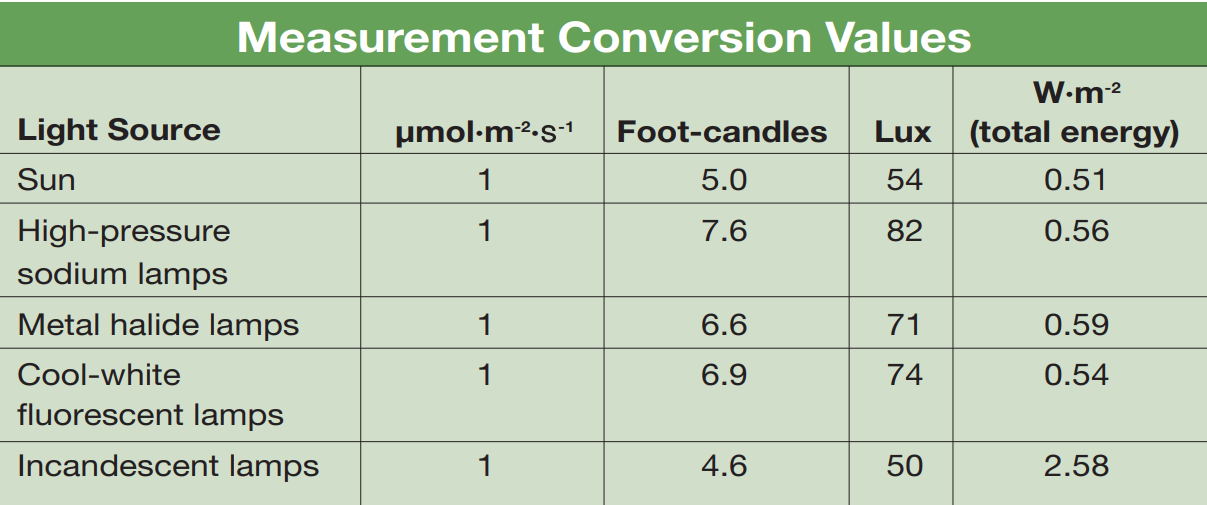
Light it up!
DOWNLOADJuly 24, 2006 - E. Runkle
technically speaking By Erik Runkle
Light It Up!
Welcome to Technically Speaking! I am excited about the opportunity to use this column to discuss some of the more technical and quantitative aspects of greenhouse crop production. Some of the major topics I plan to discuss each month include how to use light, temperature and plant growth regulators to produce high-quality crops as well as strategies to produce crops in an energy efficient manner. The cornerstone of this column will be the incorporation of research-based information — information that has been generated through experimentation in controlled environments. Column topics will be based in part on questions I receive as an extension specialist in floriculture. I also welcome your suggestions for future column subjects
This spring, I was pleasantly surprised by the number of greenhouse growers in Michigan that installed artificial lighting in their production ranges. During the winter and early spring, more growers are using photoperiodic lighting (lighting at a low intensity) to accelerate flowering of long-day plants. More growers are providing plugs with supplemental, photosynthetic lighting (lighting at a high intensity) to shorten plug schedules and reduce crop finish times. Yet, I believe lighting remains one of the least-utilized technologies in the production of garden plants in the northern half of the United States and Canada.
Lighting is a serious investment that may require serious capital spending. The different lighting options and strategies can become complicated. Because lighting can accelerate crop growth and development, growers often have to modify their production schedules and sometimes their cultural practices. Finally, lighting units can seem like a foreign language and can be difficult to convert into numbers that are meaningful.
Understanding Light Measurements. When speaking of light, growers often use footcandles, researchers commonly use µmol·m-2·s-1 and mol·m-2·d-1, and Europeans often use lux or klux (kilolux equals 1,000 lux). Watts per square meter (W·m-2) is used by greenhouse engineers and scientists when discussing units of energy.

The foot-candle, µmol·m-2·s-1 and lux all describe the amount of light received at any one point in time. These can be measured instantaneously using a light meter and vary from one minute to the next. The µmol·m-2·s-1 unit refers to the number of photons (or particles) of light within the photosynthetic waveband that is received per second within 1 sq. meter of area
Instantaneous light units can be converted easily using Figure 1, below. For example, to convert 500 foot-candles of light from high-pressure sodium lamps into µmol·m-2·s-1, divide 500 by 7.6, which equals 66 µmol·m-2·s-1. To convert 800 µmol·m-2·s-1 of light from the sun into foot-candles, multiply 800 by 5.0, which equals 4,000 foot-candles.
The unit mol·m-2·d-1 is used to describe the daily light integral (DLI), which is the number of photons of light received in 1 sq. meter during a 24-hour period. To measure the DLI, light measurements need to be recorded throughout the day and integrated every 24 hours. This can be performed by some greenhouse environmental control computers, a data logger connected to a light sensor or devices designed to measure the DLI (such as the WatchDog by Spectrum Technologies). None of the instantaneous light units can be converted to the DLI unit and vice versa.
Growers that are able to make their own lighting conversions can understand the different lighting languages. In time, I hope all growers become accustomed to using the µmol·m-2·s-1 when discussing plant responses. Yes, it is a mouthful to pronounce (micromoles per square meter and second), but it is the unit appropriate for plant responses, including photosynthesis. In contrast, the foot-candle and lux were developed based on the sensitivity of the human eye. There are several other less-common lighting units. For help on those conversions, feel free to contact me.
Erik Runkle is assistant professor and floriculture extension specialist in the Department of Horticulture at Michigan State University, East Lansing, Mich. He can be reached at runkleer@msu.edu or (517) 355-5191.



 Print
Print Email
Email




